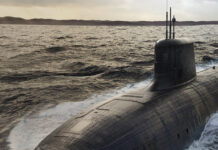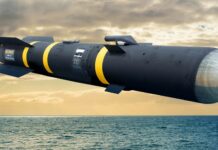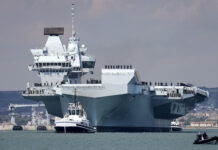The submarine-building plans under the Aukus defence pact have now been revealed following the meeting of US President Joe Biden, British Prime Minister Rishi Sunak and Australian Prime Minister Anthony Albanese in San Diego on 13 March 2023.
While the central tenet of the Aukus agreement was always for the United Kingdom and United States to facilitate Australia’s procurement of nuclear-powered attack submarines (SSNs), it has now emerged that the UK will also receive new SSNs under the pact.
Australia will initially receive three US-built Virginia-class SSNs from as soon as the early 2030s, with an option for two more if needed.
“The SSN Virginia class will provide Australia a nuclear-powered submarine capability as early as possible,” the Australian Department of Defense stated on its website following the Aukus meeting in San Diego. “This acquisition will eliminate any capability gap and increase the three nations’ ability to deter aggression and contribute to peace and stability in the Indo-Pacific.”
Beyond these, however, a new submarine class will be produced using a new British-led design but incorporating the latest US technology.
“Australia and the UK will both build new submarines to this design, known as ‘SSN-Aukus’, with construction of the UK’s submarines taking place principally in Barrow-in-Furness. Australia will work over the next decade to build up its submarine industrial base and will build its submarines in South Australia [Adelaide] with some components manufactured in the UK,” the UK Ministry of Defence (MoD) stated on its website on 13 March.
Construction will start on the UK’s SSN-Aukus submarines towards the end of this decade, with the first boat delivered to the Royal Navy (RN) in the late 2030s to replace the current Astute-class SSN fleet, while the Royal Australian Navy (RAN) will receive its first SSN-Aukus boats in the early 2040s.
The MoD stated that the SSN-Aukus submarines “will be the largest, most advanced and most powerful attack submarines ever operated by the Royal Navy, combining world-leading sensors, design and weaponry in one vessel”.

SSN-Aukus fleet numbers were not specified in the material released by the respective governments, but the UK MoD stated that “Decisions about how many submarines the UK requires will be made in the coming years, based on the strategic threat picture at the time.”
To make the new Australian SSN fleet operational by the earliest possible date RAN personnel will be embedded in the RN and US Navy and – subject to necessary arrangements – at British and US submarine industrial bases by the end of this year.
US submarines will also increase port visits to Australia from this year, with RN submarines increasing visits from 2026. British and US SSNs will also make longer-term deployments to Australia from as early as 2027 to accelerate the development of Australia’s workforce, infrastructure and regulatory system.
The Aukus pact will thus deliver a degree of international SSN co-operation and interoperability that is unprecedented. It is only the second time that the US will have exported its nuclear-powered submarine technology (after supplying technology to the UK) and the pact will see the RN and RAN not only operating the same SSN type but also using SSN components common to the US Navy.
The three countries’ SSN fleets “will communicate using the same terminology and the same equipment”, Sunak declared on 13 March. “This is a powerful partnership. For the first time ever it will mean three fleets of submarines working together across both the Atlantic and Pacific, keeping our oceans free, open and prosperous for decades to come.”
While the debate will continue over whether the UK is over-reaching its capabilities in still trying to project power into the western Pacific – especially at a time when supporting Ukraine has exacerbated strains to the UK defence budget and supply chain – the level of trilateral interoperability and co-operation encased within the Aukus pact will at least make operating in the Pacific somewhat easier.
Peter Felstead











